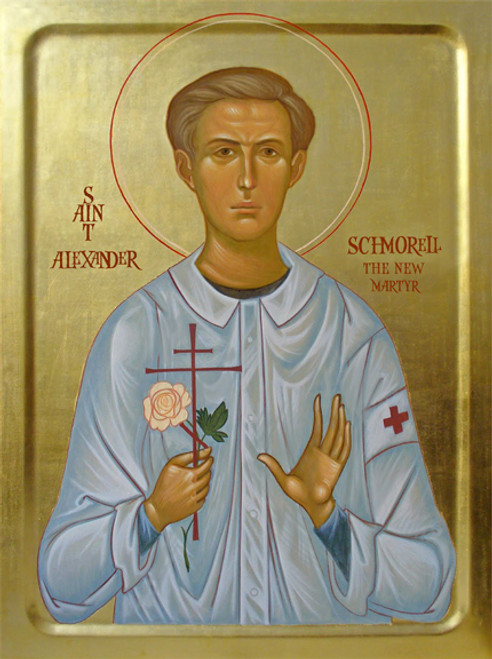Commemorated on August 12
Saint Alexander is known as "the charcoal burner", was Bishop of Comana in Pontus. Whether he was the first to occupy that see is unknown. The saint's curious name comes from the fact that he had, out of humility, taken up the work of burning charcoal, so as to escape worldly honors. He was noted for being exceptionally dirty in consequence.
He was called a philosopher, but it is not certain that the term can be taken literally. His philosophy consisted rather in his preference for heavenly rather than earthly things. The discovery of his virtues was accidental and due to the contempt with which he was widely regarded. St. Gregory Thaumaturgus had been asked to come to Comana to help select a bishop for that place. As he rejected all the candidates someone suggested derisively that he might accept Alexander, the charcoal-burner. Gregory took the suggestion seriously, summoned Alexander, and found that he had to do with a saintly man of great capabilities. Alexander was made bishop of the see, and administered it with wisdom. He was burned to death in the persecution carried out by Decius.
Alexander would have been unknown were it not for a discourse by St. Gregory of Nyssa, on the life of St. Gregory Thaumaturgus, in which the election of Alexander is incidentally described.
Returning to Chios, he was assigned as the priest for the home for lepers, which became a new setting for his virtues and charitable activities. The icon of the Panagia Ypapanti (the Meeting of the Lord), the protectress of the hospital for lepers, focuses on all her acts of kindness.
The Lady Theotokos, through the prayers of Saint Anthimos, performed countless miracles of healing the infirmities of the faithful, both those whose names are known and those who remain anonymous. This institution for unfortunate lepers became a spiritual center of physical and mental health. His entire ministry at the home for lepers shows his deepest faith and his very valuable contributions.
Here the greatness of the Saint is revealed. As the priest of that church, Saint Anthimos was always found with the lepers: he ate with them, he talked to them, and he communed them with the Spotless Mysteries. After the Divine Liturgy he rested.
In that hallowed atmosphere, he envisioned the establishment of a Monastery to shelter nuns who had fled there from Asia Minor following the exchange of populations (1922-1924).2 So his dreams moved forward toward their fulfillment. In 1927, after he had a vision of the Theotokos, he received permission to build such a monastery. He also built the magnificent temple dedicated the icon of the Mother of God the Helper (Παναγία Βοηθεία) in 1930. From that time he settled in the Monastery filled with devotion to the Most Holy Theotokos, and there he advanced in his life of asceticism, filled with a multitude of virtues and holiness through the intercession and help of the Theotokos, and he shepherded his flock with great affection and love, strengthening and consoling them with his sweet and simple speech, healing the sicknesses and afflictions of those who had recourse to him.
After his life-long ministry, now at the age of 90, fully ripe and full of days, with a dignity which was reminiscent of the great ascetics of the desert, he celebrated his last Divine Liturgy on January 27, 1960. A few days later he reposed in peace.







